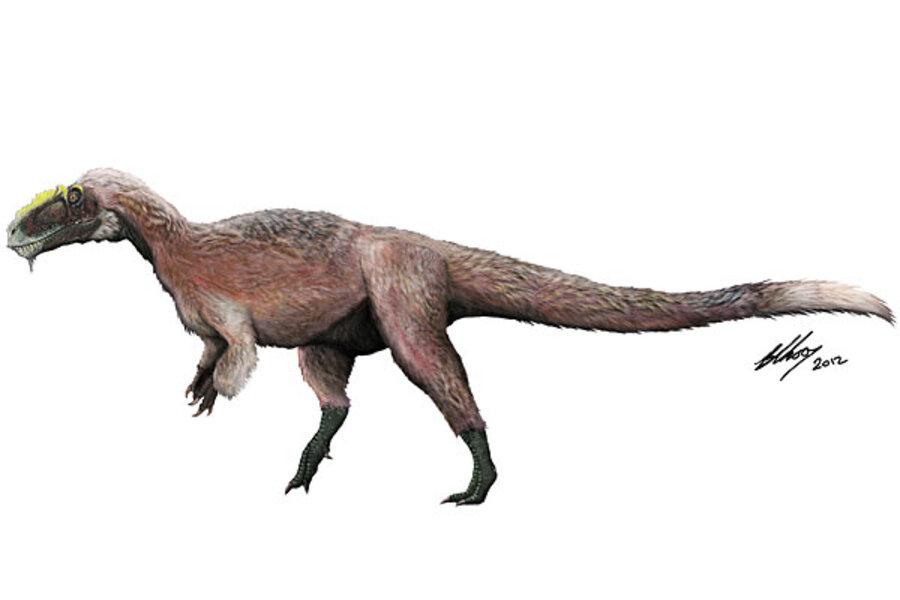Was Tyrannosaurus rex actually fuzzy?
Loading...
| Los Angeles
The discovery of a giant meat-eating dinosaur sporting a downy coat has some scientists reimagining the look of Tyrannosaurus rex.
With a killer jaw and sharp claws, T. rex has long been depicted in movies and popular culture as having scaly skin. But the discovery of an earlier relative suggests the king of dinosaurs may have had a softer side.
The evidence comes from the unearthing of a new tyrannosaur species in northeastern China that lived 60 million years before T. rex. The fossil record preserved remains of fluffy down, making it the largest feathered dinosaur ever found.
If a T. rex relative had feathers, why not T. rex? Scientists said the evidence is trending in that direction.
"People need to start changing their image of T. rex," said Luis Chiappe, director of the Dinosaur Institute at the Natural History Museum of Los Angeles County, who was not part of the discovery team.
Much smaller dinosaurs with primitive feathers have been excavated in recent years, but this is the first direct sign of a huge, shaggy dinosaur. Scientists have long debated whether gigantic dinosaurs lost their feathers the bigger they got or were just not as extensively covered.
The new tyrannosaur species, Yutyrannus huali, is described in Thursday's issue of the journal Nature. Its name is a blend of Latin and Mandarin, which translates to "beautiful feathered tyrant."
A team of Chinese and Canadian scientists analyzed three well-preserved fossil skeletons — an adult and two juveniles — recovered from a quarry in China's Liaoning province by a private fossil dealer. Most striking were remains of down-like feathers on the neck and arm. Though coverage was patchy, scientists suspected the species had feathers over much of its body.
It would have felt like touching "long, thick fur," co-author Corwin Sullivan of the Chinese Academy of Sciences said in an email. Another scientist, Thomas Holtz Jr. at the University of Maryland, compared it to the feathers of an emu.
The creature lived about 125 million years ago. At 30 feet (10 meters) long and weighing a ton, Y. huali would have reached T. rex's chest.
Instead, the dino-fuzz likely provided insulation, though camouflage or showing it off like a peacock could not be ruled out.
Since T. rex is related to this newfound feathery species, chances are good that T. rex was feathered as well, scientists said. Just don't mistake fuzzy for cuddly. The predatory dinosaur would have been just as menacing.
Having feathers "doesn't make it less threatening or less fearsome," said Holtz, who had no role in the research.
Matthew Lamanna, assistant curator at the Carnegie Museum of Natural History, said T. rex most likely was covered in both feathers and scales.
Whatever the coverage of feathers, the latest fossil finds "force us to conceive of tyrannosauroids in a new way," said Julia Clarke at the University of Texas at Austin.







